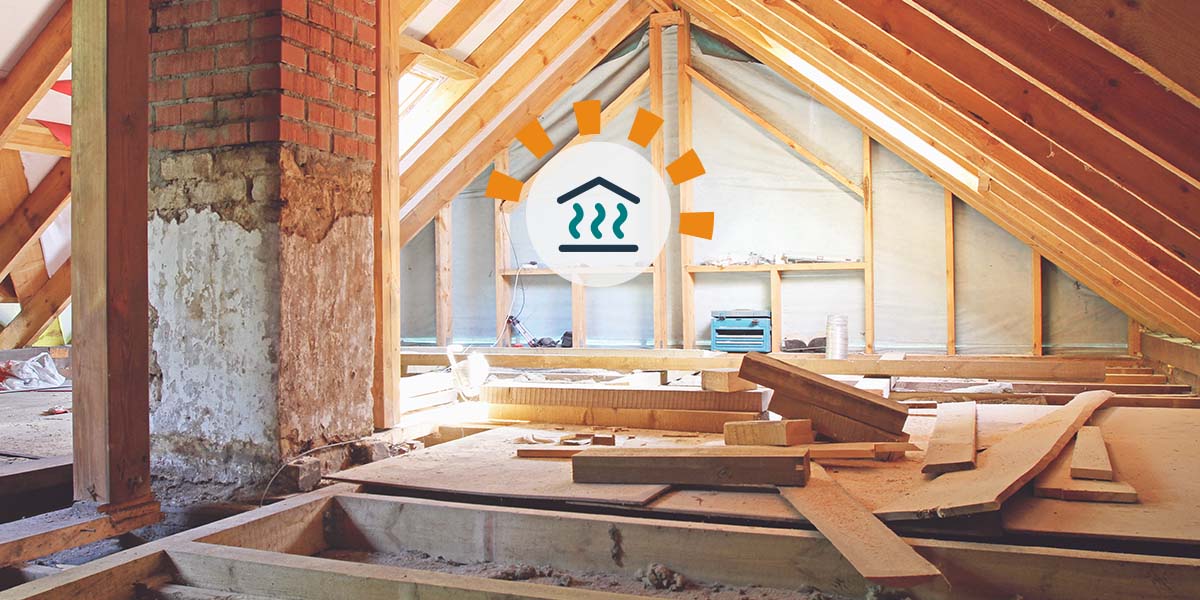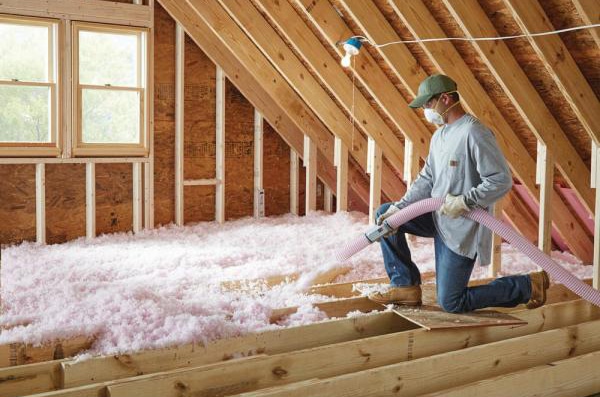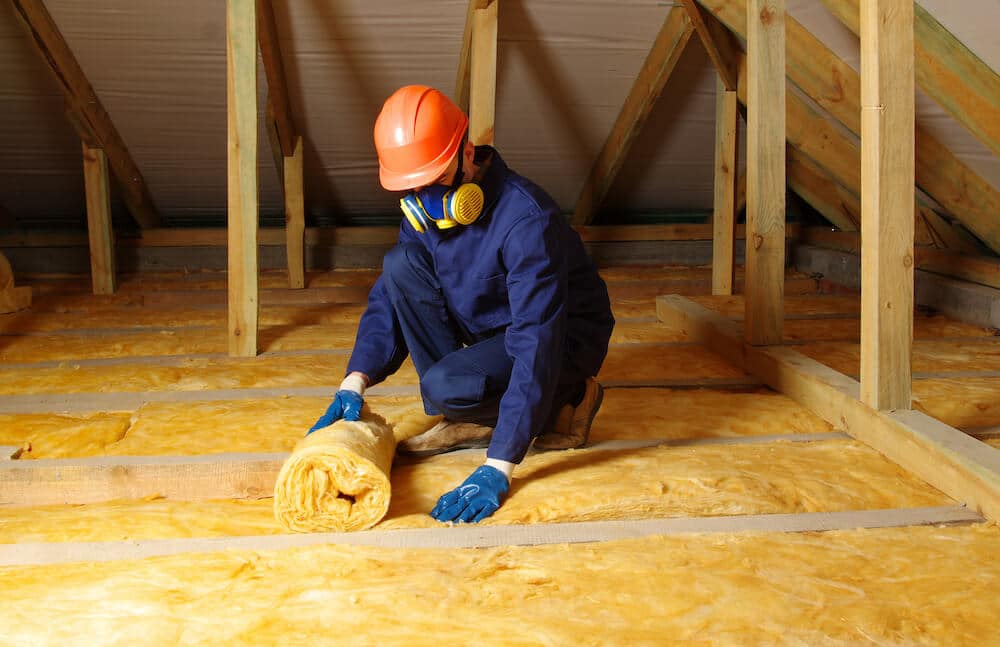Discover the Different Kinds Of Attic Insulation and Their Special Advantages for Your Home's Energy Effectiveness

Fiberglass Insulation
Fiberglass insulation is among one of the most typically made use of products for attic insulation because of its exceptional thermal performance and cost-effectiveness. Made up of little glass fibers, this material properly traps air, producing a shielding barrier that assists preserve regular interior temperatures. Its high R-value per inch makes it especially effective at standing up to heat transfer, which is vital for power conservation in homes.
Setup of fiberglass insulation is fairly simple, commonly offered in batts or loose-fill kinds, accommodating various attic setups. Furthermore, it is non-combustible and immune to dampness, decreasing the danger of mold growth. This resilience contributes to its durability, making fiberglass a feasible long-lasting financial investment for home owners.
In addition, fiberglass insulation is often manufactured from recycled materials, which improves its eco-friendliness. The product can additionally add to soundproofing, lessening sound transfer in between areas. While it is important to use protective gear throughout installment to prevent inflammation from the fibers, the general benefits of fiberglass insulation, including energy cost savings and environmental considerations, make it a preferred selection for boosting attic room performance and promoting a comfy living setting.
Spray Foam Insulation
Spray foam insulation is an extremely efficient choice for attic insulation, recognized for its premium air securing and thermal performance. This innovative insulation product is composed of a combination of isocyanate and polyol material, which, when combined, increases quickly to fill voids and cavities in the attic room area. Its ability to stick to different surfaces makes sure a constant barrier versus air leaks, dramatically lowering warm loss during cooler months and heat gain throughout warmer periods.
One of the vital benefits of spray foam insulation is its high R-value per inch, which suggests it offers excellent thermal resistance in a relatively slim application. This is particularly beneficial in attic rooms where space is frequently limited. Furthermore, spray foam can aid decrease dampness accumulation, decreasing the threat of mold and mildew and mildew development, which can be destructive to both the framework and interior air top quality.
While the initial price of spray foam insulation might be higher than conventional alternatives, its long-term power cost savings, paired with enhanced convenience and improved home value, make it a beneficial financial investment for property owners looking for improved power efficiency. Attic Insulation DFW. Generally, spray foam insulation stands apart as a reliable option for optimizing attic insulation
Cellulose Insulation

Cellulose insulation is a prominent selection for attic insulation, largely composed of recycled paper products treated with fire resistants. This environmentally friendly choice is recognized for its outstanding thermal efficiency, effectively lowering warm transfer in both summertime and winter season. The thick composition of cellulose permits it to fill up spaces and gaps in attic room spaces, providing a seamless obstacle versus air leakages.
One of the substantial benefits of cellulose insulation is its capacity to withstand mold and parasites, owing to the fire resistant therapies made use of during production. Additionally, it boasts a high R-value per inch, which translates into superior energy efficiency. Homeowners can anticipate lower home heating and air conditioning costs as a result of boosted insulation.
Setup is normally completed via blowing loose cellulose right into the wanted area, permitting a quick and reliable process. This method likewise minimizes disturbance to the existing framework. In addition, cellulose insulation has a fairly reduced ecological influence, as its production procedure utilizes recycled products, adding to sustainable structure practices.
Rock Woollen Insulation
Amongst the different options for attic room insulation, rock woollen, also called mineral wool, sticks out because of its impressive thermal and acoustic efficiency. Made from natural or recycled products, rock wool is developed by melting rock and rotating it right into fibers, resulting in a product that supplies exceptional insulation buildings.
One of the significant benefits of rock woollen insulation is its high R-value, which shows its performance in standing up to warmth flow. This characteristic not just boosts energy efficiency but additionally adds to maintaining a comfy interior temperature year-round. Additionally, rock woollen is inherently fire-resistant, making it a more secure choice for homes as it can endure heats without melting or releasing poisonous fumes.
Furthermore, rock wool insulation succeeds in soundproofing abilities, properly minimizing noise transmission in between rooms and from outdoors resources. In general, rock woollen insulation gives a thorough solution for boosting energy performance, safety, and comfort in household settings.
Radiant Obstacle Insulation
Radiant barrier insulation functions as a reliable option for decreasing heat transfer in attics, specifically in warmer environments. This sort of insulation works by reflecting induction heat far from living rooms, consequently reducing the quantity of heat that goes into a home during hot weather - Attic Insulation DFW. Usually composed of a highly reflective material, such as light weight aluminum foil, glowing obstacles are mounted in attic rooms, encountering the roofing system, where they review can intercept inbound warmth from the sun
The primary benefit of glowing obstacle insulation is its ability to reduced cooling expenses. By mirroring warm instead sites of absorbing it, glowing barriers can help preserve a more secure interior temperature, reducing the work on cooling systems. This performance converts into lower power costs and enhanced comfort for home owners.
Along with power savings, radiant obstacles can additionally add to boosted indoor air top quality. By lowering heat buildup, they help minimize humidity degrees, which can protect against mold development and enhance general air flow. When installed correctly, glowing barrier insulation can be a vital addition to any energy-efficient home, making it a deserving factor to consider for property owners wanting to improve their attic room insulation method.
Verdict
In conclusion, understanding the different kinds of attic room insulation-- fiberglass, spray foam, cellulose, rock woollen, and radiant barriers-- allows property owners to make informed decisions relating to power effectiveness. Each insulation type offers one-of-a-kind benefits, such as remarkable thermal resistance, moisture management, and sound attenuation. By selecting the ideal insulation material, significant decreases in power costs can be accomplished, along with improvements in indoor convenience. Eventually, the appropriate option adds to a more lasting living helpful hints atmosphere and advertises overall power preservation.

In verdict, understanding the numerous kinds of attic insulation-- fiberglass, spray foam, cellulose, rock wool, and radiant obstacles-- enables property owners to make informed decisions concerning power efficiency.